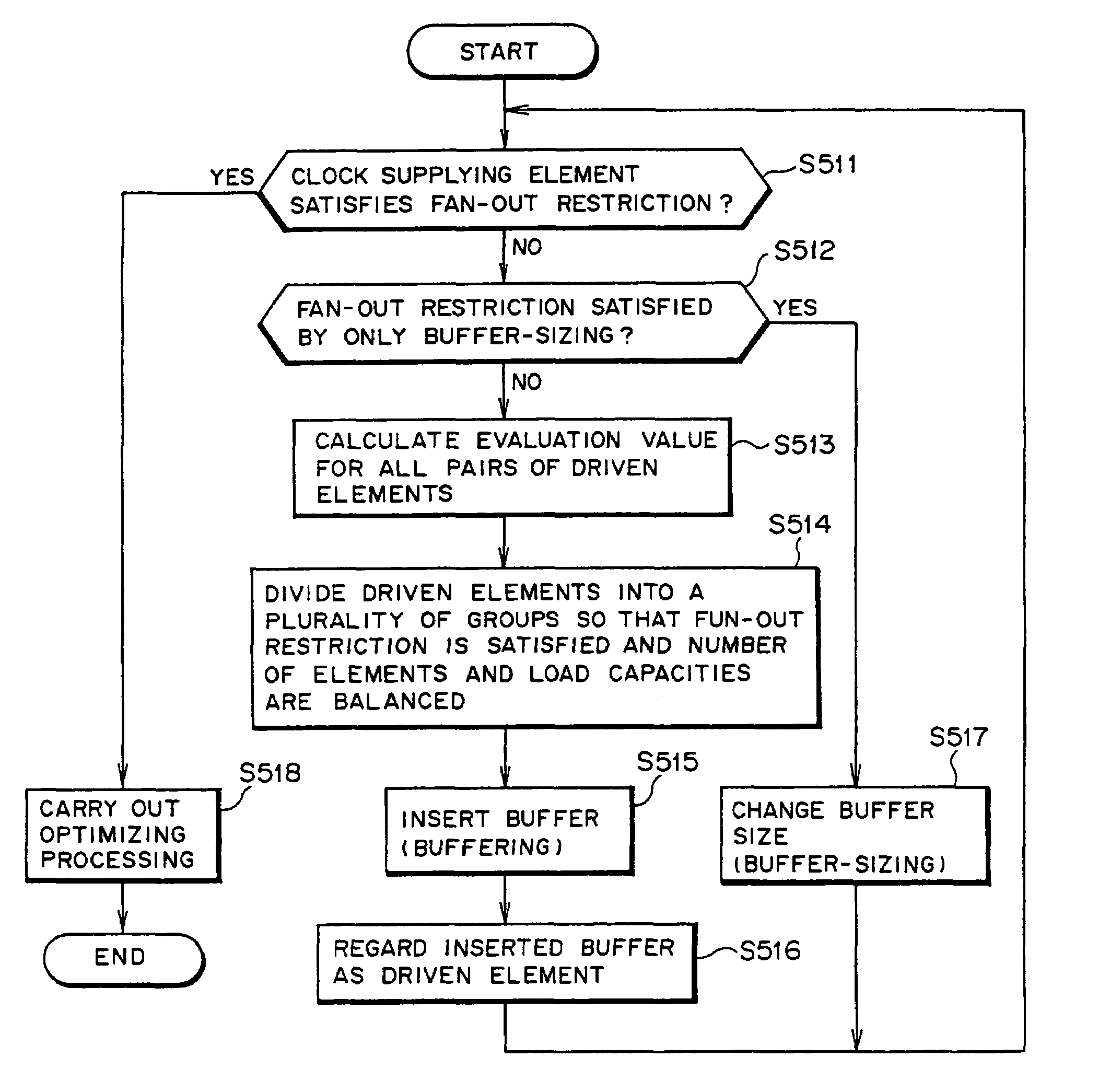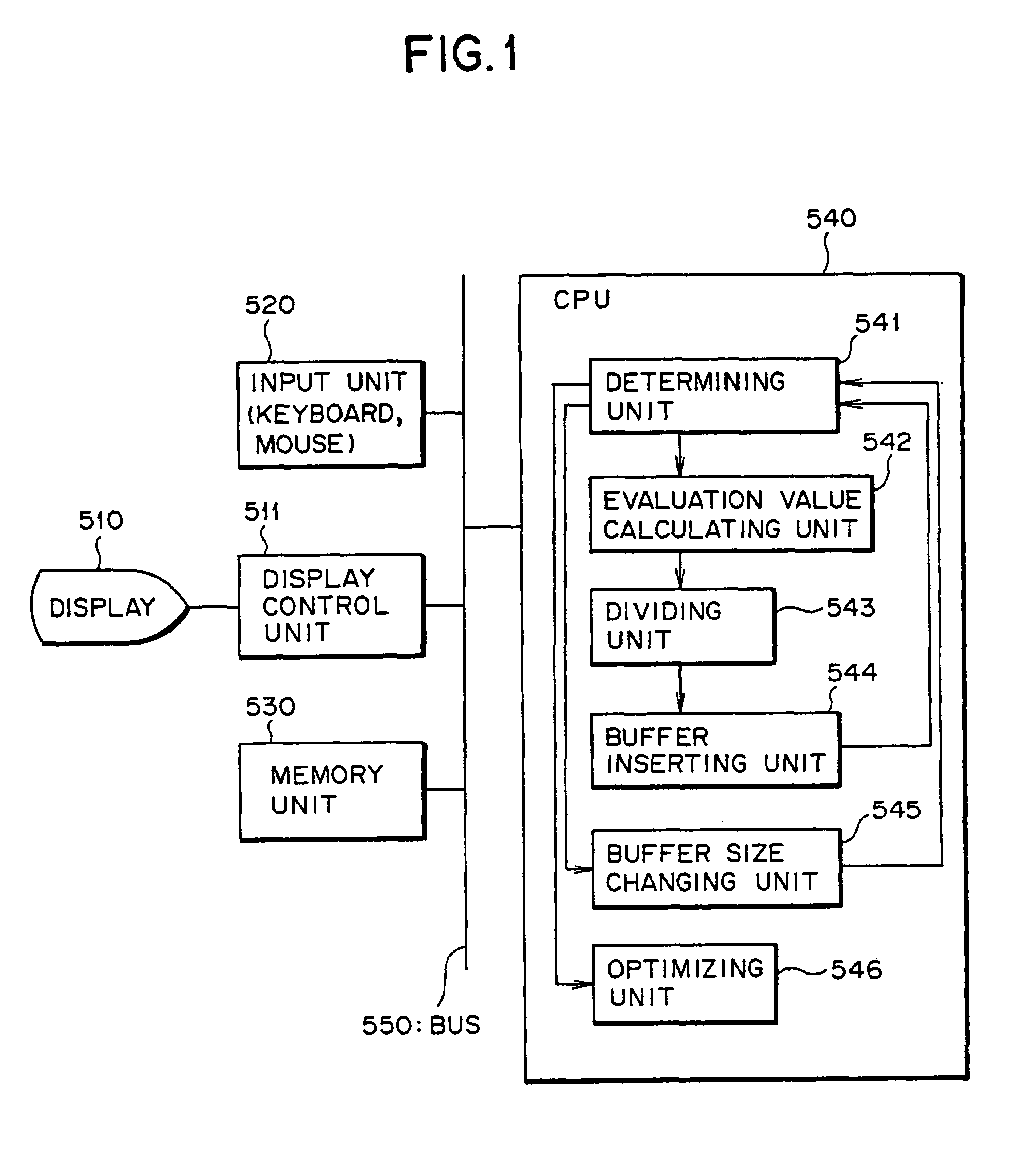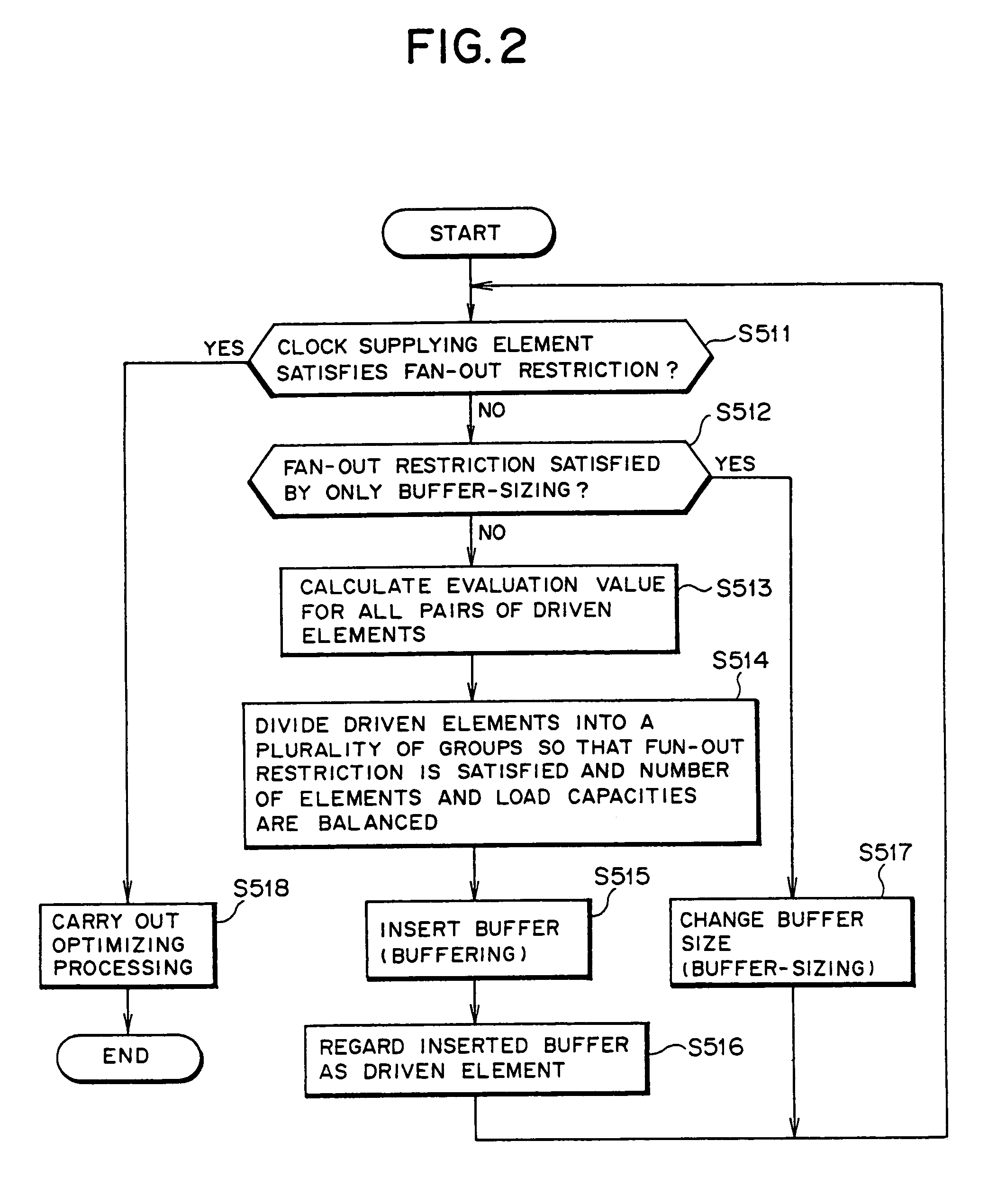Method of optimizing signal lines within circuit, optimizing apparatus, recording medium having stored therein optimizing program, and method of designing circuit and recording medium having stored therein program for designing circuit
a signal line and circuit technology, applied in the field of optimizing signal lines within circuits, can solve the problems of difficult to adjust the clock skew, complicated fabrication, and difficulty in designing the clock logic of the integrated circuit, and achieve the effect of reducing the probability of timing errors after fixing the layout, reducing the time it takes for the circuit to carry out processing, and efficient arrangemen
- Summary
- Abstract
- Description
- Claims
- Application Information
AI Technical Summary
Benefits of technology
Problems solved by technology
Method used
Image
Examples
first embodiment
[0161][1] Description of a
[0162]FIG. 1 is a block diagram showing a functional arrangement of an optimizing apparatus for optimizing signal lines within a circuit as a first embodiment of the present invention. The optimizing apparatus shown in FIG. 1 is utilized when a designer designs a circuit (e.g., a VLSI) including a clock supplying element (clock supplying source) and a number of elements (driven elements; in this case, flip-flops) supplied with a signal from the clock supplying element. When the above-described circuit is designed, the optimizing apparatus optimizes signal distribution through clock signal lines (clock system net) connecting the clock supplying element to the number of FFs in terms of clock distribution. Thus, as shown in FIG. 1, the optimizing apparatus is arranged to include a display 510, a display control unit 511, an input unit 520, a memory unit 530, a general processing unit (processor, computer) having a CPU 540 or the like.
[0163]According to the abo...
second embodiment
[0234][2] Description of a Second Embodiment
[0235]FIG. 15 is a block diagram showing a functional arrangement of an optimizing apparatus for optimizing signal lines within a circuit as a second embodiment of the present invention. As shown in FIG. 15, the optimizing apparatus of the second embodiment is similarly arranged to the apparatus of the first embodiment shown in FIG. 1. However, the arrangement of the second embodiment includes the CPU 540 added with a function as a buffer stage number adjusting unit 47.
[0236]The buffer stage number adjusting unit 547 serves as a function unit that inserts one ore more buffer elements 503 into paths extending from the clock supplying element 501 to each of the FFs 502 so that the number of cell stages become equal among the all paths extending from the clock supplying element 501 to the FFs 502. In this case, the cells include, in addition to the buffer element 503, a logic gate or a selector to be incorporated into the clock system net.
[02...
third embodiment
[0243][3] Description of a
[0244]FIG. 18 is a block diagram showing a functional arrangement of an optimizing apparatus for optimizing signal lines within a circuit as a third embodiment of the present invention. As shown in FIG. 18, the optimizing apparatus of the third embodiment also is arranged similarly to the apparatus of the first embodiment shown in FIG. 1. However, the arrangement of the third embodiment is additionally provided with an insert buffer estimating unit 548 and an insert buffer selecting unit 549 at the CPU 540.
[0245]When the determining unit 541 determines that the clock tree arrangement of the current status does not satisfy a fan-out restriction and buffer-sizing operation is insufficient for making the clock tree satisfy the fan-out restriction, then the insert buffer estimating unit 548 estimates the number of stages of buffer elements that are to be inserted into the clock tree based on a load capacity and a number of driven elements of the clock tree.
[024...
PUM
 Login to View More
Login to View More Abstract
Description
Claims
Application Information
 Login to View More
Login to View More - R&D
- Intellectual Property
- Life Sciences
- Materials
- Tech Scout
- Unparalleled Data Quality
- Higher Quality Content
- 60% Fewer Hallucinations
Browse by: Latest US Patents, China's latest patents, Technical Efficacy Thesaurus, Application Domain, Technology Topic, Popular Technical Reports.
© 2025 PatSnap. All rights reserved.Legal|Privacy policy|Modern Slavery Act Transparency Statement|Sitemap|About US| Contact US: help@patsnap.com



